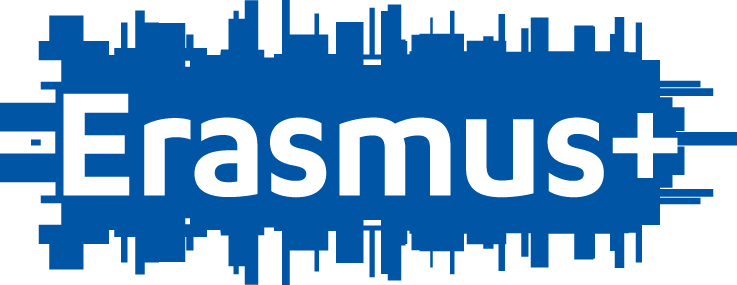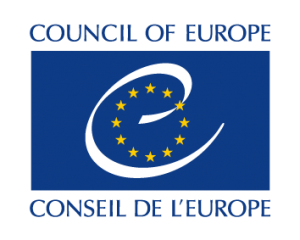Documents
PECULIARITIES OF PHYSICAL TRAINING OF GIRLS 10-11 YEARS OLD, DOING SPORTS GYMNASTICS.

Among many sports, gymnastics is distinguished, first of all, by the unusual shape and types of movements. Exercises for flexible and extensor movements in the elbow joints, legs in the knee and hip joints. In this regard, the first feature is that she has all the necessary skills. Considering the relationship of different types of training at various stages of training, L.Y. Arkaev notes that the entire sports path can be conditionally divided into three large periods: initial preparation, improvement, completion of competitive activity. These periods, in turn, are divided into stages. Initial training consists of general preliminary and initial technical training; improvement includes the stages of technical improvement and higher mastery; the period of completion of competitive activity involves the transition to a light gymnastic exercise [1]. The physical training of gymnasts presents special, specific requirements, which must ensure the fulfillment of all program elements and ensure the high-quality implementation of certain combinations consisting of such elements in all gymnastic all-around events. The physical preparation of gymnastic exercises and at each specific stage of the training process is different and its content [4]. All that is needed for this is training, which should be developed where necessary, as much as necessary. In a sporting exercise, when implementing quality, a completely specific order of muscle inclusion and the sequence of their work is required. It should also be noted about the flexibility and mobility in the joints of gymnasts. Thanks to this quality engine. Insufficient mobility in the joints limits the level of manifestation of forces, negatively affects speed and coordination abilities, reduces the efficiency of work and often causes damage to ligaments and muscles [3]. However, the level of development of flexibility in gymnastics should not be the maximum possible, but optimal — that is, correspond to the principle of optimal redundancy. Thus, we set ourselves the goal of our research, which was devoted to methods of strength training and education of flexibility and mobility in joints in girls 10-11 years old, engaged in gymnastics. To solve the tasks we used the following methods: analysis of scientific and scientific-methodical literature on the investigated problem; method of pedagogical observation; pedagogical testing of strength, flexibility and mobility in the joints. At the first stage of the study, the effectiveness of using exercises for the development of strength and mobility in joints in girls involved in gymnastics was studied. At the second stage of our work, a group of children was selected. The studies were carried out during the training process on the basis of the State Educational Institution “Children’s Sports School for gymnastics named after L. A. Y. Arkaeva “Present researchers did not cause negative reactions.
During the school year, from September 2013 to April 2014, girls involved in gymnastics perform the following exercises to develop strength:
1. Exercises for the development of the strength of the muscles of the body:
-swing in a rack on parallel bars (10-12 times);
-high angle of focus on the hands (20 s); -muscle retention in a static position on the support (back and abdominal muscles – 45 s);
-“Speechag” (10 times); -raises his foot on the Swedish wall (15-20 times).
2. Exercises for the development of muscle strength in the arms and shoulder girdle:
-push-ups in a handstand on parallel bars (10-15 times); -push-ups, legs on the support (10-15 times);
-rope climbing without the help of legs
– 3 meters; -pulling in the hang on the crossbar (10 times);
-swing in a rack on high bars (10-12 times).
3. Exercises for developing leg strength:
-“Pistols” (squats on one leg) (10 times on each leg);
-jumps on the raised support (15 times);
-jumping across the bench to the right, to the left (40 jumps);
-long jump with advancement in a circle;
-jumping with a change of legs on the gymnastic bridge (30 times);
-running on the spot. All exercises were performed by the method of circular training in one hour.
At the end of the strength training, simulators were used. During the same period, gymnasts performed the following exercises for flexibility and mobility in the joints. Hand jerk in all directions, with a gradual increase in the strength and amplitude of sudden movements. Circular movements of the hands back and forth with a gradual increase in the amplitude of movements. Leans forward and various starting positions. “Bridge”. Twine. Swinging with legs on a support forward, to the side and back. Circles and jumps to the right and left over the obstacle facing him and to the side. Twisting in the shoulder joints with a rope, a gymnastic stick, gradually bringing the grip points to the level of shoulder width. Movement with a gymnastic stick from different atoms. Exercises for the development of mobility in the joints of the spine. Kneeling, clasping hands at the elbows, the partner presses on the thoracic spine between the shoulder blades. Lie on your stomach – bending point blank to your arms. Lying on his stomach – bending backward, focusing on his arms with bending of the legs. Lie on your stomach – leaning back, arms up with the help of a partner. Stand on the chest, spring movements, bending the legs at the knees. Lying on your back, arms to the sides, legs forward, legs to the sides. Exercises for the development of mobility in the hip joints near the gymnastic wall. “Twine” on the right, left legs transverse from the chair, from the table, between the chairs. Stand on the side of the gymnastic wall, swing: right foot forward; left leg forward; right leg to the side; left leg to the side; right leg back; left foot back. Stand with your back to the gymnastic wall, straighten your leg forward and up, the leg latch on the handrail: right leg forward; left leg forward; right leg to the side; left leg to the side [2]. Each gymnast could score a certain number of points (for each exercise – 10 points, only 80 points = 100%). According to the results of the study of the strength abilities of young gymnasts at the beginning of the year, it can be noted that three people scored 44 points, which amounted to 55%, and a different number of points were distributed as follows: 70 points – 88% (one person); 51 points – 64% (one person); 60 points – 75% (one person); 45 points – 56% (one person); 55 points – 69% (one person); 48 points – 60% (one person); 49 points – 61% (one person); 50 points – 63% (one person); 39 points – 39% (one person) At the end of the year, the performance of motor abilities in young gymnasts improved. Two gymnasts scored -73 points, which amounted to 91%, two people – 62 points (77%) and two gymnasts – 63 points (79%). Another number of points was distributed as follows: 77 points – 96% (one person); 66 points – 82% (one person); 71 points – 89% (one person); 60 points – 73% (one person); 61 points – 76% (one person); 64 points – 80% (one person). Comparing the physical abilities of each gymnast, it can be noted that in two girls the indicator improved by 27%. Other gymnasts also showed positive dynamics in the test results. In the range from 8% to 26%, 10 gymnasts improved their performance. Thus, indicators in exercises for developing strength (squatting on one leg a “gun”, climbing a rope without the help of legs, “match”, a large angle of inclination, lifting legs on the gymnastic wall), flexibility and mobility in the joints (“fold” , twine, “bridge”) gymnasts tended to improve. Experts in the field of gymnastics note that the initial training in gymnastics is considered as a period of creating a strong motor base for further specialized technical improvement. The functional development of organs and systems of the body occurs, which creates a potential reserve of its forces. Physical training of young gymnasts helps to strengthen the musculoskeletal system and improve the anatomical and physiological properties, contributes to the development of strength, general and special endurance, agility, flexibility. Physical exercises in the initial period of training have a great influence on the formation of the basics of technical skills. The stage of improving sportsmanship involves the further accumulation of motor potential and improvement of abilities, and in the basic elements physical training is directly related to the technique of exercises on the simulator and is consistent with the work of technical training. According to our study, the methodology for developing strength, flexibility and mobility in the joints of gymnasts differs in structure, content and dosage in its complexity, since gymnastics requires special training for the further study of gymnastic exercises. Flexibility is an important physical quality in gymnastics. However, the level of development of flexibility in this sport should not be the maximum possible, but optimal, that is, correspond to the principle of optimal redundancy. Excessive flexibility in gymnastics is more harmful than useful, because gymnasts who are too flexible by nature usually have a lack of strength. In addition, it was found that very high mobility in the spinal column is an unfavorable factor for achieving superior sports results and performing high training loads, without which the achievement of these results in gymnastics is impossible. At the same time, lack of flexibility is a negative factor [1]. From the foregoing, we can conclude that the use of special exercises in the methodology for the development of strength, flexibility and mobility in joints shows a positive trend. The effectiveness of using these techniques in the training process with gymnasts 10-11 years old is confirmed and it makes sense to use them. The formation of physical culture and sports is based on one of the most important methodological principles of general pedagogy – the unity of training and education [6]. The main task of gymnastics in the university, as well as any sports discipline, is the professional and pedagogical training of specialists in physical education and sports for secondary schools and youth sports schools. The role of gymnastics as a basic, sports discipline in teaching students at the Faculty of Physical Education is currently growing significantly. In this regard, it is in gymnastics classes that the basic knowledge of methods for developing strength, flexibility and mobility in the joints should be formed, which can help young professionals use the exercises in the physical preparation of children in the educational process.
Teacher of Faculty of Physical Education of Tomsk State University (Russia),
Master of Sports in gymnastic,
Anna Vytnova
Oslo 22.01.2020





